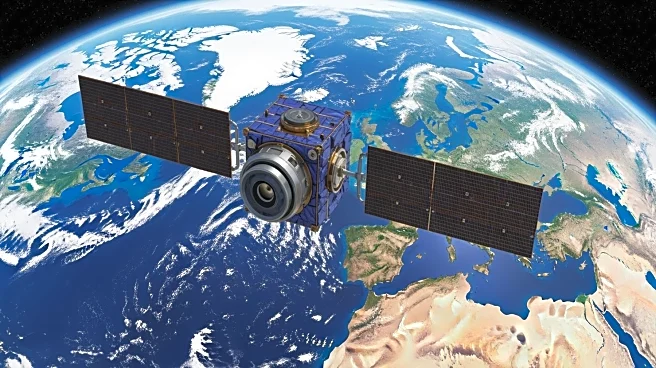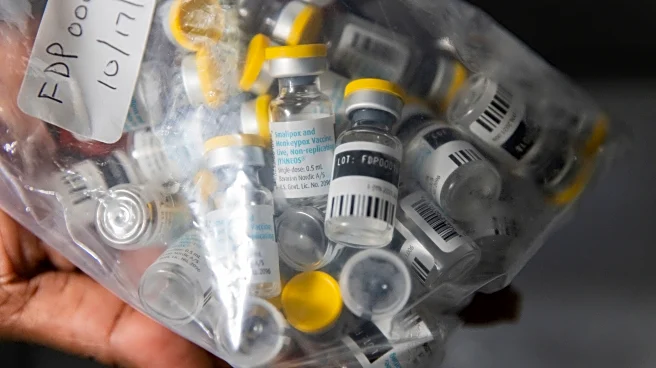What's Happening?
Researchers at National Taiwan University have developed a new type of luminescent hydrogel capable of detecting volatile organic compounds (VOCs) with high sensitivity. This innovative hydrogel, detailed in a study published in the journal Small, is designed
to identify formaldehyde, a common air pollutant, at levels as low as 39 parts per billion (ppb), significantly below the World Health Organization's safe limit of 80 ppb. The hydrogel is composed of a flexible material network that includes modified gelatin and a sugar-based compound, enhanced with europium-containing laponite particles. These particles enable the hydrogel to glow differently when exposed to specific VOCs, creating unique light patterns that indicate the presence of various compounds. The hydrogel's ability to heal itself after damage and be injected into various shapes or environments makes it highly adaptable for environmental monitoring.
Why It's Important?
The development of this hydrogel is significant for environmental monitoring and public health protection. Formaldehyde is a prevalent air pollutant linked to various health issues, including respiratory problems and cancer. The ability to detect formaldehyde at such low concentrations can lead to more effective monitoring and regulation of air quality, potentially reducing exposure to harmful pollutants. This technology could benefit industries and communities by providing a reliable method for tracking air quality and ensuring compliance with environmental standards. Additionally, the hydrogel's adaptability and self-healing properties make it a promising tool for long-term environmental monitoring, offering a flexible solution for detecting a range of VOCs.
What's Next?
The introduction of this hydrogel technology could lead to advancements in environmental monitoring systems, with potential applications in various settings, including industrial sites, urban areas, and residential environments. Researchers may explore further enhancements to the hydrogel's sensitivity and adaptability, potentially expanding its use to detect other harmful VOCs. Regulatory agencies and environmental organizations might consider integrating this technology into existing air quality monitoring frameworks, improving the accuracy and reliability of pollution tracking. The hydrogel's development could also inspire similar innovations in environmental sensing technologies, fostering a broader movement towards more effective pollution detection and control.
Beyond the Headlines
This hydrogel technology highlights the intersection of material science and environmental health, showcasing how innovative materials can address pressing public health challenges. The ethical implications of improved pollution detection include the potential for more stringent environmental regulations and increased accountability for industries contributing to air pollution. Culturally, heightened awareness of air quality issues could lead to greater public demand for cleaner environments and sustainable practices. Long-term, this development may contribute to shifts in policy and industry standards, emphasizing the importance of technological solutions in combating environmental health risks.















